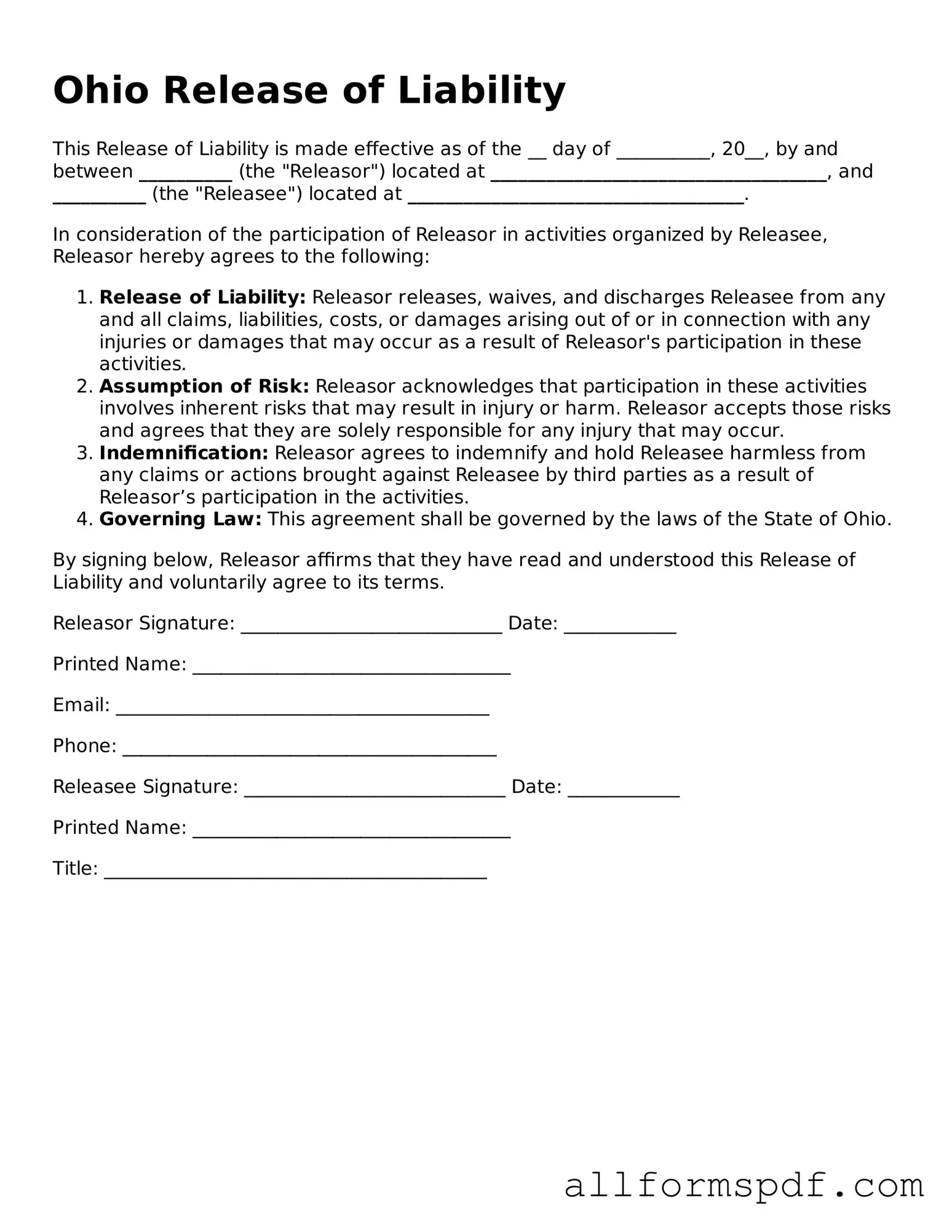Filling out the Ohio Release of Liability form is an important step for anyone looking to protect themselves legally. However, many individuals make common mistakes that can lead to complications down the line. Understanding these pitfalls can help you navigate the process more effectively.
One frequent mistake is failing to read the entire form thoroughly before signing. Many people skim through the document, assuming they understand its implications. This can lead to signing away rights without fully comprehending the risks involved. Take the time to read each section carefully. It’s crucial to know what you are agreeing to.
Another common error is not providing accurate information. Whether it’s your name, address, or the details of the event, inaccuracies can render the form invalid. Always double-check that all your information is correct. Mistakes in these details can create confusion and may affect the enforceability of the release.
Some individuals neglect to include specific activities or risks they are releasing liability for. A vague release can lead to disputes in the future. It’s essential to clearly outline the activities involved and the potential risks associated with them. The more specific you are, the better protected you will be.
Additionally, many people forget to consider the witnesses or notary requirements. Depending on the situation, you might need someone to witness your signature or have the document notarized. Failing to meet these requirements can invalidate the release. Always check if your specific circumstances require additional validation.
Lastly, individuals often overlook the importance of consulting with a legal professional before submitting the form. While it may seem straightforward, having a lawyer review your release can provide peace of mind. They can ensure that your rights are protected and that the document is legally sound. Seeking professional guidance is a proactive step that can save you from potential issues later on.
